Cashing Out Coal
Air Date: Week of November 12, 2021
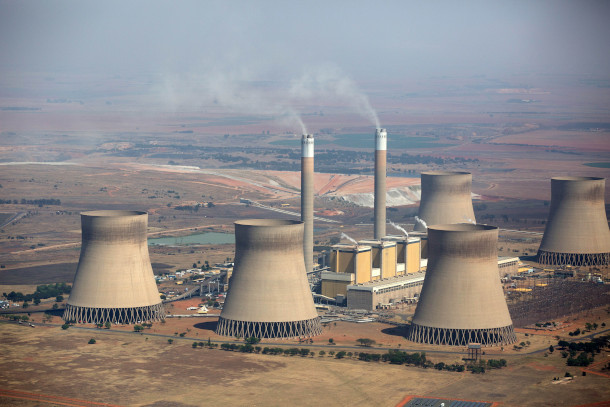
The Majuba coal power station powered by Eskom is located between Volksrust and Amersfoort in Mpumalanga, South Africa. (Photo: James Oatway for CER)
At the COP26 climate talks, the US and European nations agreed to provide $8.5 billion in financing to help South Africa phase out its use of coal power. South Africa, which is experiencing yet another wave of power outages, gets most of its electricity from burning coal and is the largest carbon emitter in Africa. Jesse Burton, a senior associate with the think tank E3G, joins Host Steve Curwood to discuss what international aid means for South Africa's energy transition.
Transcript
BASCOMB: From PRX and the Jennifer and Ted Stanley Studios at the University of Massachusetts Boston, this is Living on Earth. I’m Bobby Bascomb.
CURWOOD: And I’m Steve Curwood. As we prepared this broadcast delegates at the COP26 UN Climate Summit in Glasgow were still negotiating, so we’ll have the final results in next week’s show. The questions remaining include how global warming gases might be taxed or traded in markets and what more will be done to help less developed countries deal with loss and damage from climate disasters. Any agreements will be enforced on the honor system, as COP 26 did not try to create a binding treaty that would require formal ratification by nations, as was done for the Kyoto Protocol in 1997 at COP 3. So, it’s on the basis of handshakes that many, but not all, of the nearly 200 nations in Glasgow agreed to reduce methane emissions, move away from gasoline and diesel-powered cars, and protect the world’s forests. We’ll have more on forests commitments later in this broadcast. A big handshake came between the US and China who put aside their geopolitical tensions and issued a joint communique reestablishing an Obama era working group that facilitated contact between US and Chinese local governments, academics, and others. Yet to be agreed upon, as we bring you this show, is draft language that calls for the phase-out of fossil fuel subsidies and the use of coal. And even if those provisions don’t survive the final rounds of negotiations the US and several European nations agreed to provide $8.5 billion dollars to help South Africa phase out its use of coal. Despite plenty of sunlight more than 80% of South Africa’s electricity comes from coal, making it the largest carbon emitter in Africa. Eskom is the state utility company that provides more than 90 percent of the electricity used in South Africa and it’s currently drowning in more than 27 billion dollars in debt and as a result can’t keep the lights on all the time. Joining us now is Jesse Burton, a senior associate with the think tank E3G who provides analysis and advice for socially just coal transitions in South Africa and globally. Welcome to Living on Earth Jesse!
BURTON: Thanks for having me.
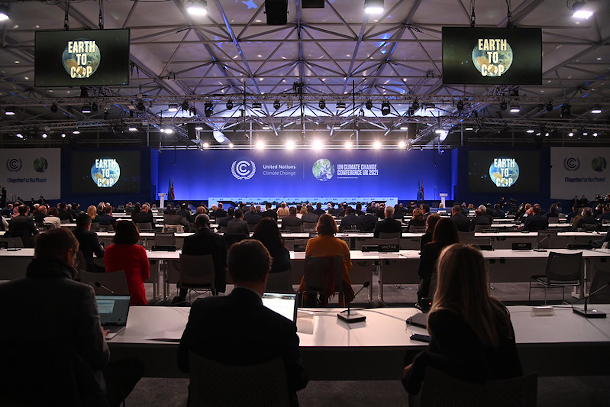
Delegates at the Opening Ceremony of COP26 in Glasgow, where the US and several European nations agreed to provide $8.5 billion in financing to help South Africa phase out its use of coal. (Photo: Karwai Tang / UK Government, COP26, Flickr CC BY-NC-ND 2.0)
CURWOOD: So, tell me how does the national grid work in South Africa, especially when it comes to coal?
BURTON: Well, actually at the moment, it's not working. We're facing something called loadshedding, which is a word which is very familiar to South Africans which really just means Eskom is not meeting demand. And kind of what's happened is South Africa is incredibly coal dependent, so we get about 87% of our electricity from.. from coal fired power plants, a little bit about 5% from wind and solar and a small contribution from nuclear and hydro and some imports. What's happened is that that Eskom has been building some new coal fired power plants, Majipa and Kasile, and they're not working very well. And at the same time, the rest of the fleet is very old, kind of similar to the US in many ways. A lot of the plants were built in the 60s and 70s, and 80s. And they haven't been maintained very well. And they're kind of they're falling over like an old car that you haven't maintained. And so, Eskom's big challenge at the moment is how does it get those coal plants that are still under construction to work? Can it maintain some of the old ones in the short term? And how to think about phasing out the coal in the medium and longer term as it transitions away?
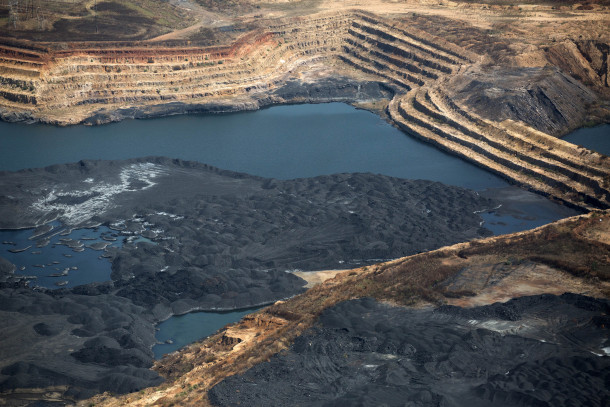
Emissions from coal include sulfur dioxide (S02), nitrogen oxides (NOx) and particulates all of which contribute to respiratory illnesses and lung disease. (Photo: James Oatway for CER)
CURWOOD: What are the health costs of the coal industry in South Africa? The people in the mines and the people who are running them are now people of color. It's not the same thing as under apartheid. But coal, well puts out a lot of particulates.
BURTON: Yeah, it's an interesting question. I mean, paradoxically, coal has in some ways been the backbone of development in South Africa. It's been this cheap input for cheap electricity which brought a whole lot of development, created the basis for all the industry in the country. At the same time, it's been accompanied by this deep environmental injustice. Most of the coal mines and the coal plants are in sort of 100-kilometer radius in this province called Mpumalanga. And so, you have air pollution problems, you've got water pollution problems, the most polluted river catchment in the country that Olifants catchment runs through the mining areas. From an air pollution perspective you know, you've got extraordinarily high levels of particulates, but also SOx and NOx. To the point where the.. the government's own health study, which was recently leaked, it wasn't even released, it was discovered through some litigation that civil society is undertaking to try and force the government to implement its own air pollution laws. But in that process, they discovered that the government's modeling sees that air pollution in Mpumalanga leads to the premature death of about 5,000 people per year, has twice as much asthma in the region as there is anywhere else. So, it just comes with these enormous costs. On top of that, you know, you've got a lot of abandoned mines. You know, the mines now are better, they're doing rehab as they go and that sort of thing but historically, there were a lot of mines that were just let go that were abandoned that companies went under, you know. So, there's also issues around degraded land, and this really starts to impact people's health. We hear from activists on the ground that people who've grown up in the region who want to work in mining, because this is the only sector that has any growth in the area, in part because other sectors are put at risk by these kinds of impacts, you know, and health and water and air.
If you've grown up in the area, people are often too sick to pass the health tests that you need to pass to get into mining.
CURWOOD: Really?
"SA’s coal industry, the world’s fifth-largest, employs 90 000 miners, generates 80% of the country’s electricity, and supplies the feedstock for about a quarter of the country’s liquid fuel, all at a time of soaring unemployment and frequent blackouts."https://t.co/xuFmQ3RkZ0 pic.twitter.com/yMiBLwiVHi
— Centre for Environmental Rights (@CentreEnvRights) November 9, 2021
BURTON: Yeah.
CURWOOD: You're saying that if you live near the mines, where the jobs might be in your neighborhood, if you grew up there, your health has been so compromised, that you won't qualify to go and work at the mine
BURTON: Often, yeah.
CURWOOD: Whether in the office or down in the pit?
BURTON: Exactly and it's very hard. I mean, South Africa as a whole has incredibly high levels of unemployment. They've always been very bad, but post-COVID it's even worse, you know, 45% unemployment in the country and slightly higher in Mpumalanga province itself. And that's even worse for youth unemployment. If you're a young black woman, unemployment levels are almost 70%. So, it's incredibly difficult.
CURWOOD: So, during the Conference of the Parties in Glasgow, the US and a number of European nations pledged to put together eight and a half billion dollars for South Africa's transition away from coal. How precedented is this? And how important is it for South Africa?
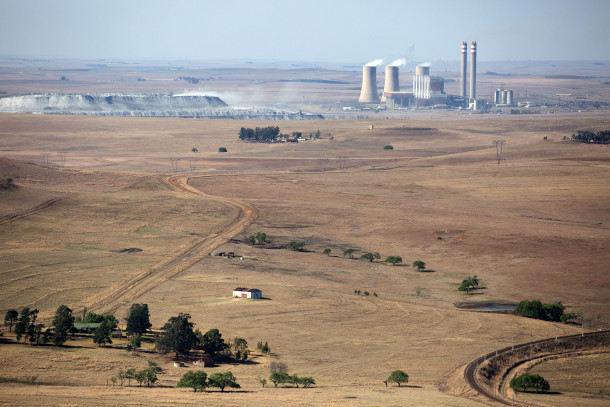
Aerial view of the Majuba coal fire plant. A study conducted by the state-owned Council for Scientific and Industrial Research conducted research that found that more than 5,000 South Africans die annually in the nation's coal belt because of lack of air quality enforcement. (Photo: James Oatway for CER)
BURTON: I think it's hugely important. I mean, this is the first time a country led donor supported process like this is going to unfold in this way. You know, the donor countries came together, and then they've pledged this 8.5 billion and the South African government came together, and they put together their asks around where they needed support and they've signed this political declaration at COP, and it's huge. I think this is a test case for seeing how coal intensive developing countries, and there are a lot of them, can be supported in this way. You know, it's fascinating to see because now we’re getting down to talking, you know, what is it going to take to decarbonize the power sector or to get to that low NDC range of kind of enroute to decarbonization. Well, it requires a huge build out of transmission infrastructure. You know, we've got to build 40 gigawatts of wind and solar over the next decade, at the moment we've only got six gigawatts installed, so it's a huge scale up. And this just energy transition partnership is a way for developed countries to kind of step up and deliver on the finance that they've been promising for many years and the support they've been promising to developing countries to do this.
CURWOOD: So, what about interest rates? Because in the United States, the government borrows for around, say. 1% and in South Africa, what's that, at five or six and even more in the private sector. To what extent is the international community committing to having the loans be at the same rate that people going green in the Global North can borrow the money?
BURTON: Well, this is what I would expect to see. I think it's a really good question. This, I think, is precisely the kinds of negotiation that will need to happen in the next six months. I would expect to see the developed countries say yes, we're borrowing at 1% or less, and we offer to transfer some of that value to you. Because it's very important for South Africa, we can't really afford to indebt ourselves further. If the terms of those concessional loans are not good enough. We can't grow faster; we can't afford to. The people in Mpumalanga who don't have work can't afford to. So, this is really that context. What made me very optimistic about it is that the political declaration very much centers just transition. So, it acknowledges all of these constraints. It acknowledges that South Africa has an employment crisis, that looking after fossil fuel workers is important that you have to look at the mining value chain and the communities in Mpumalanga. But exactly how all of those pieces fit together is not fully known yet.
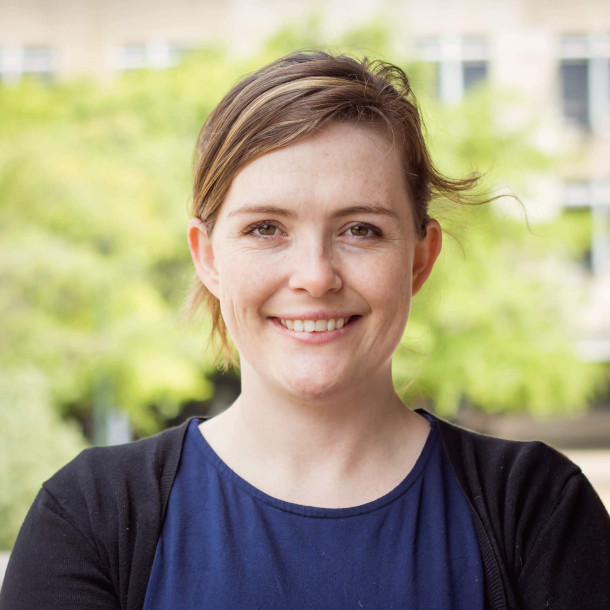
Jesse Burton is a Senior Associate of E3G providing analysis and policy advice on coal transitions in South Africa and globally. She is based in Cape Town, South Africa where she also works as a researcher at the University of Cape Town. (Photo: Courtesy of Jesse Burton)
CURWOOD: How hopeful are you, Jesse, that this will all come to pass that the money will be there that there'll be this conversion going forward? In South Africa with a utility, which has been frankly, troubled for decades.
BURTON: I'm feeling remarkably hopeful. I mean, there's always the risk. There's the risk the money doesn't come, there's a risk that the money comes on the wrong terms. You know that it's too expensive to actually do a just transition, there's a risk that it goes only into renewable energy, and not so much into the aspects of the core value chain where I see a lot of future risk for people, you know, especially looking after miners looking after communities. But I'm very optimistic, I think it's the first time that in South Africa, we're talking a lot about what is really going to be needed to make sure that the transition happens in a way that is fair, not just a transition happens, that it is actually a just transition, and that is finance to support that. And it is a long-term process, where finance can keep coming in to support that. And it also demands of the South African government that they think a lot now about their plan on going into the future. You know, what do they actually want? How do they see this unfolding? What are the needs for retraining or relocation or new skills development or SMMEs, small, small, medium businesses in that core region. There are more than enough jobs in renewable energy to offset the job losses in the coal mining and the coal power plant chain but of course, they're not always in the same place as the existing coal jobs. So, there's a lot of work to be done to say, how do we put some of these renewables in the coal region? How do we make sure that workers in renewable energy plants are unionized? You know, because it's very dispersed. How do we make sure that the wages are similar or better? So that all of those kind of things line up? I feel quite inspired, actually. I hope it happens and this of course, you know, we wanted to be ambitious, we want it to be transformational and we have to work to make that happen. It won't just happen automatically. But I think the runway is there to have a just transition in South Africa and that makes me really excited.
CURWOOD: Jesse Burton is a senior associate at E3G, speaking to us from South Africa. Thanks so much Jesse for taking the time with us today.
BURTON: Thank you so much for having me.
Links
BBC News | “COP26: South Africa Hails Deal To End Reliance On Coal”
Watch this documentary produced by KCET that looks into coal mining in South Africa
NPR | “Draft Agreement At The COP26 Climate Summit Looks To Rapidly Speed Up Emissions Cuts”
Human Rights Watch | “South Africa’s 'Deadly Air' Case Highlights Health Risks from Coal”
The Japan Times | “The Cost Of Coal In South Africa: Dirty Skies And Sick Kids”
Living on Earth wants to hear from you!
Living on Earth
62 Calef Highway, Suite 212
Lee, NH 03861
Telephone: 617-287-4121
E-mail: comments@loe.org
Newsletter [Click here]
Donate to Living on Earth!
Living on Earth is an independent media program and relies entirely on contributions from listeners and institutions supporting public service. Please donate now to preserve an independent environmental voice.
NewsletterLiving on Earth offers a weekly delivery of the show's rundown to your mailbox. Sign up for our newsletter today!
 Sailors For The Sea: Be the change you want to sea.
Sailors For The Sea: Be the change you want to sea.
 The Grantham Foundation for the Protection of the Environment: Committed to protecting and improving the health of the global environment.
The Grantham Foundation for the Protection of the Environment: Committed to protecting and improving the health of the global environment.
 Contribute to Living on Earth and receive, as our gift to you, an archival print of one of Mark Seth Lender's extraordinary wildlife photographs. Follow the link to see Mark's current collection of photographs.
Contribute to Living on Earth and receive, as our gift to you, an archival print of one of Mark Seth Lender's extraordinary wildlife photographs. Follow the link to see Mark's current collection of photographs.
 Buy a signed copy of Mark Seth Lender's book Smeagull the Seagull & support Living on Earth
Buy a signed copy of Mark Seth Lender's book Smeagull the Seagull & support Living on Earth

